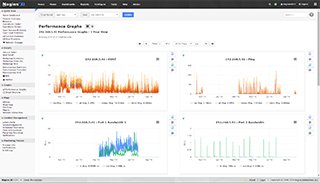
About Nagios Core
Need Help Configuring Nagios?
Our tech support team is happy to help you with any questions you might have. Contact us on our online support forum at https://support.nagios.com/forum/
Nagios XI Makes Monitoring Easier:
Nagios XI is the easy-to-use, enterprise version of Nagios that features:
- Web-Based Configuration provides advanced configuration features
- Monitoring Wizards make it easy to monitor new devices, applications, and services
- Customizable Dashboards allow for per-user customization
- Integrated Performance Graphs provide trending and capacity planning information
- Advanced Reports provide data insight and exporting capabilities
- Data Visualizations enable powerful analysis of patterns and problems
- Nagios Core Import functionality makes it easy to migrate from Nagios Core
- ... and many other features
Download a free 30-day trial to give Nagios XI a spin.
Inquire today and let our Quickstart team help you get started with Nagios XI
 Up To: Contents
Up To: Contents
 See Also: Quickstart Installation Guides
See Also: Quickstart Installation Guides
Nagios Core Overview
More information about Nagios Core - including features and technical specifications can be found online at www.nagios.org/about/.
What Is Nagios Core?
Nagios® Core™ is an Open Source system and network monitoring application. It watches hosts and services that you specify, alerting you when things go bad and when they get better.
Nagios Core was originally designed to run under Linux, although it should work under most other unices as well.
Some of the many features of Nagios Core include:
- Monitoring of network services (SMTP, POP3, HTTP, NNTP, PING, etc.)
- Monitoring of host resources (processor load, disk usage, etc.)
- Simple plugin design that allows users to easily develop their own service checks
- Parallelized service checks
- Ability to define network host hierarchy using "parent" hosts, allowing detection of and distinction between hosts that are down and those that are unreachable
- Contact notifications when service or host problems occur and get resolved (via email, pager, or user-defined method)
- Ability to define event handlers to be run during service or host events for proactive problem resolution
- Automatic log file rotation
- Support for implementing redundant monitoring hosts
- Optional web interface for viewing current network status, notification and problem history, log file, etc.
System Requirements
The only requirement of running Nagios Core is a machine running Linux (or UNIX variant) that has network access and a C compiler installed (if installing from source code).
You are not required to use the CGIs included with Nagios Core. However, if you do decide to use them, you will need to have the following software installed...
- A web server (preferrably Apache)
- Thomas Boutell's gd library version 1.6.3 or higher (required by the statusmap and trends CGIs)
Licensing
Nagios Core is licensed under the terms of the GNU General Public License Version 2 as published by the Free Software Foundation. This gives you legal permission to copy, distribute and/or modify Nagios under certain conditions. Read the 'LICENSE' file in the Nagios distribution or read the online version of the license for more details.
Nagios Core is provided AS IS with NO WARRANTY OF ANY KIND, INCLUDING THE WARRANTY OF DESIGN, MERCHANTABILITY, AND FITNESS FOR A PARTICULAR PURPOSE.
Acknowledgements
Several people have contributed to Nagios Core by either reporting bugs, suggesting improvements, writing plugins, etc. A list of some of the many contributors to the development of Nagios Core can be found in the THANKS file in the root of the Nagios Core distribution.
Downloading The Latest Version
You can check for new versions of Nagios Core at https://www.nagios.org/download.
